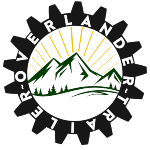Designing water lines for city water hookups in a DIY camper involves creating a system that allows you to connect your camper directly to a water supply when available at a campsite. Here’s a step-by-step guide to help you design water lines for city water hookups in your camper:
- Understand City Water Hookups:
- City water hookups typically provide pressurized water directly from the campsite’s water source. You’ll need a system that connects your camper to this external water supply.
- Plan Your Layout:
- Determine where you want the city water hookup to be located on your camper. This could be on the side or rear of the camper, depending on your design.
- Choose Materials:
- Select appropriate materials for the water line. For city water hookups, you’ll likely use a flexible hose or tubing designed for drinking water, such as a food-grade drinking water hose.
- Gather Tools and Supplies:
- Get the necessary tools and supplies, including a water pressure regulator, hose fittings, hose clamps, Teflon tape, and any brackets or mounts for securing the hose.
- Water Pressure Regulator:
- Install a water pressure regulator between the city water hookup and your camper. This helps protect your camper’s plumbing system from high water pressure that could cause damage.
- Install City Water Connection:
- Install a city water connection inlet on your camper’s exterior. This typically includes a connection point for the hose, along with a hatch or cover to protect it when not in use.
- Route Water Line:
- Route the drinking water hose from the city water connection inlet to the interior of your camper. Make sure to create a clean and secure path for the hose to prevent kinks or damage.
- Install Interior Connection:
- Inside the camper, install a water inlet connection that connects to the hose coming from the city water hookup. This could be a simple threaded connection or a quick-connect system.
- Use Teflon Tape and Secure Fittings:
- Wrap Teflon tape around threaded connections to create a watertight seal. Use appropriate hose fittings and clamps to secure the hose connections, ensuring no leaks.
- Testing:
- Before using the city water hookup at a campsite, test the system by connecting the hose to a water supply and checking for any leaks. Fix any leaks before proceeding.
- Valves and Control:
- Consider adding shut-off valves to control the flow of water from the city hookup. This allows you to easily disconnect the hose without shutting off the entire camper’s water system.
- Insulate (Optional):
- If you plan to camp in colder temperatures, consider insulating the water line to prevent freezing. Insulation sleeves designed for water hoses can help maintain the temperature.
- Labeling and Instructions:
- Label the city water hookup and any controls clearly so you know how to operate the system correctly.
- Stowage:
- When not in use, ensure the hose is properly stowed to prevent damage and keep it clean.
Remember to follow any local regulations and guidelines related to water hookup systems. Proper installation and maintenance will ensure a reliable city water hookup system that enhances your camper’s convenience during your travels.

cytotec cost – buy diltiazem cheap cost diltiazem 180mg